PRACTICAL EXPERIMENT ON BASIC REFRIGERATION SYSTEM
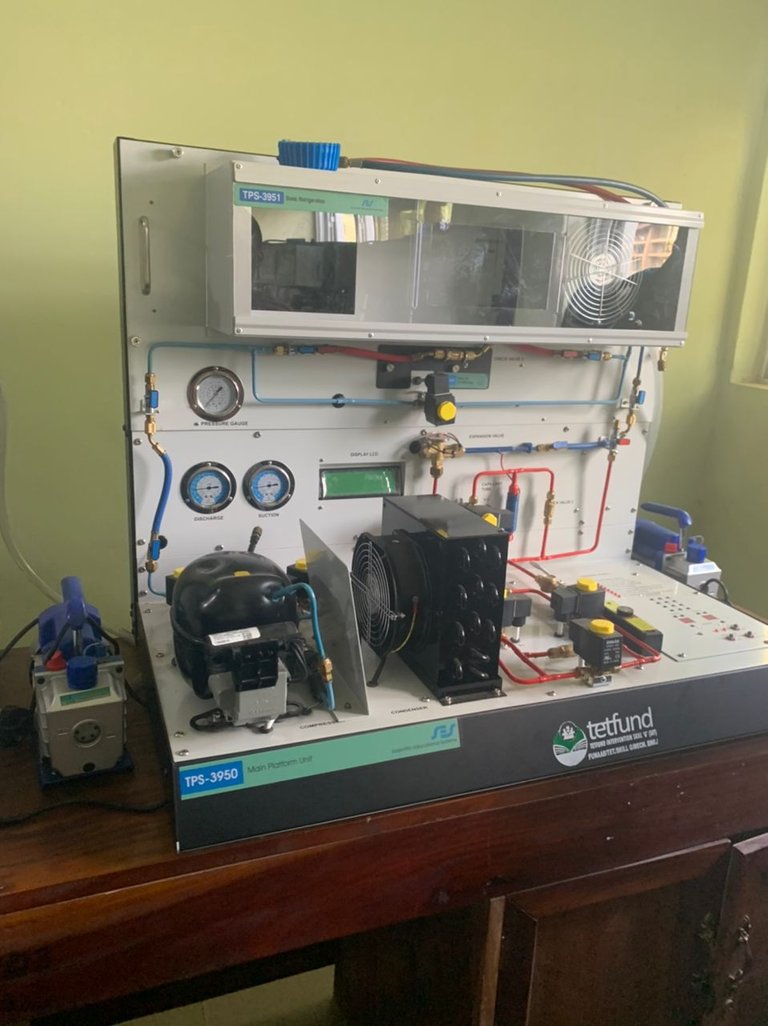
We made use of a training system known as the TPS-3951 Basic Refrigeration Training System.
The section was just an introduction class where we were exposed to the refrigeration system and components that made up the system.
It is designed to provide students with fundamental knowledge in refrigeration and air-conditioning. It can be used to diagnose faults and also for repair. It has sensors, switches, an LCD screen, and push buttons for an operation that is to switch between functions.
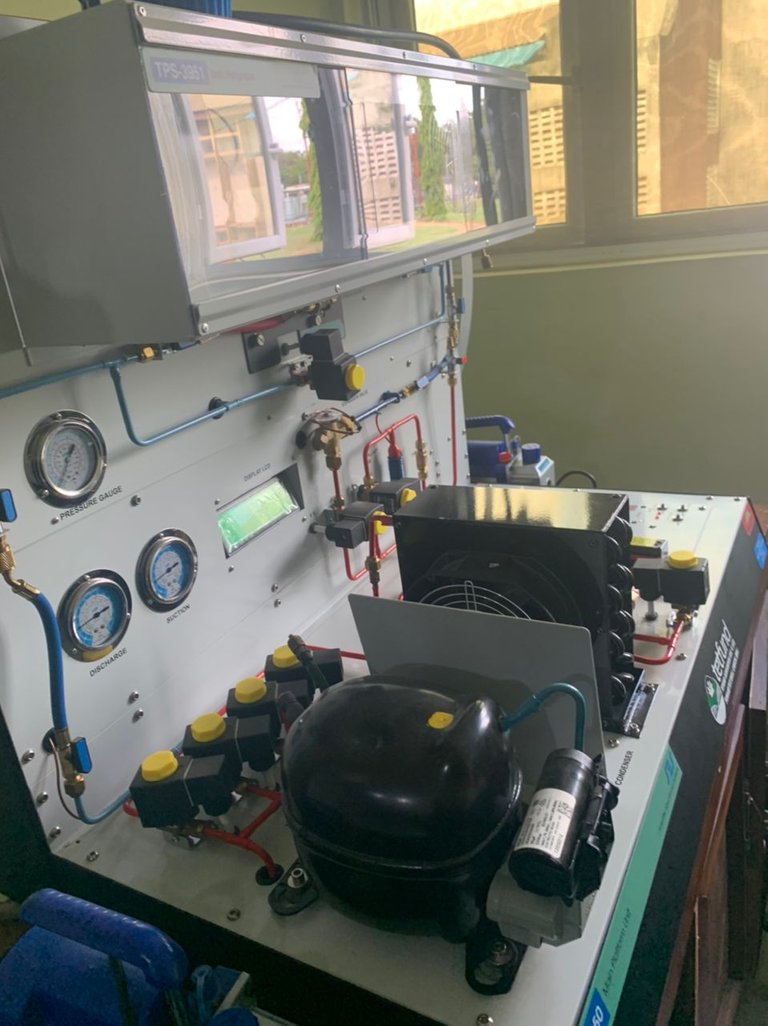
We were introduced to each component that made up the training system. It comprises four major components:
- Compressor
- Condenser
- Expansion valve or Capillary tube
- Evaporator
Other components include a receiver, filter driver, sight-glass, the refrigerant.
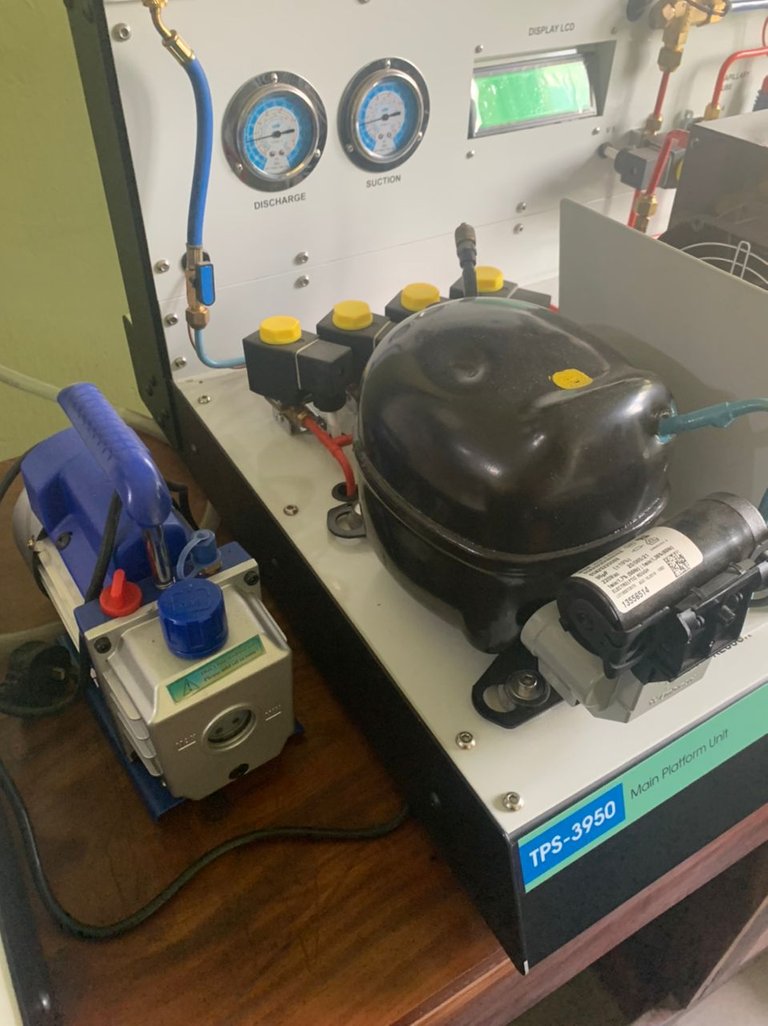
COMPRESSOR
It is the heart of the refrigeration cycle and it's an electromechanical device that supplies the working fluid (the refrigerant) to the refrigeration system.
The compressor has pistons inside which pumps or compress the refrigerant to the system.
We made mentioned the three types of compressors, which are; Hermetic, Semi-hermetic, and open-type. The open type is used majorly in vulcanizing.
The one present in the trainer is the Hermetic type.
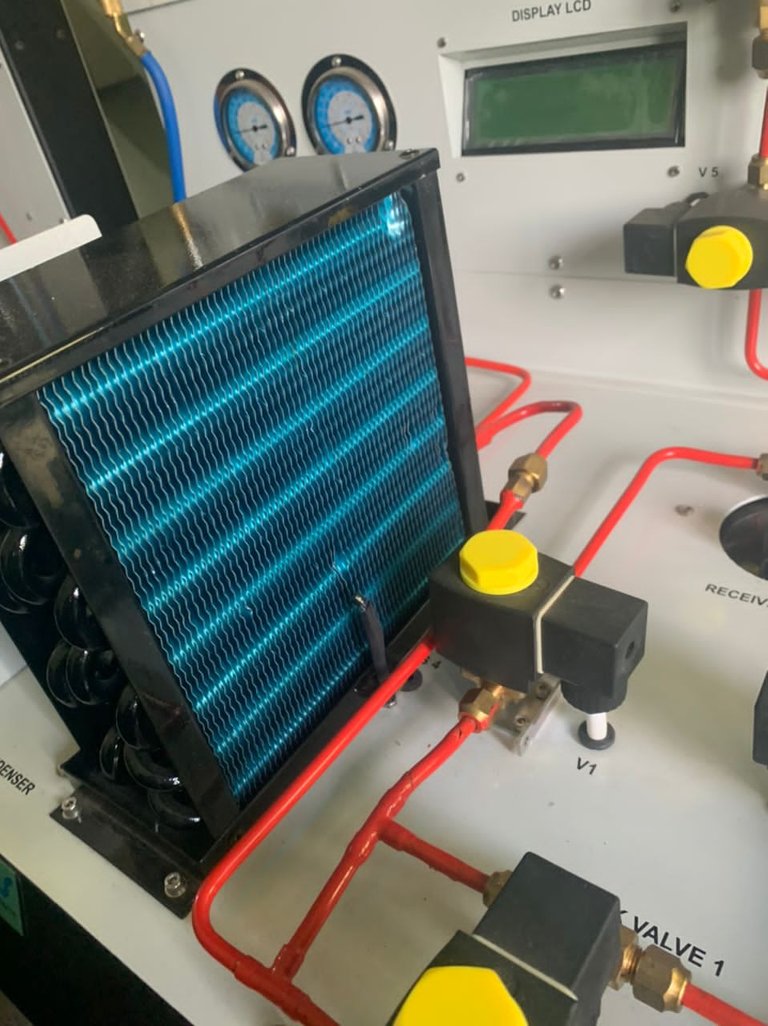
CONDENSER
It is the device that exchanges heat between the working fluid and the environment. This is where the refrigerant changes state to liquid of lower temperature and high pressure.
At the side of the condenser, there is two temperature of sensors to tell the temperature of each side of it during exchange because it exchanges heat without.
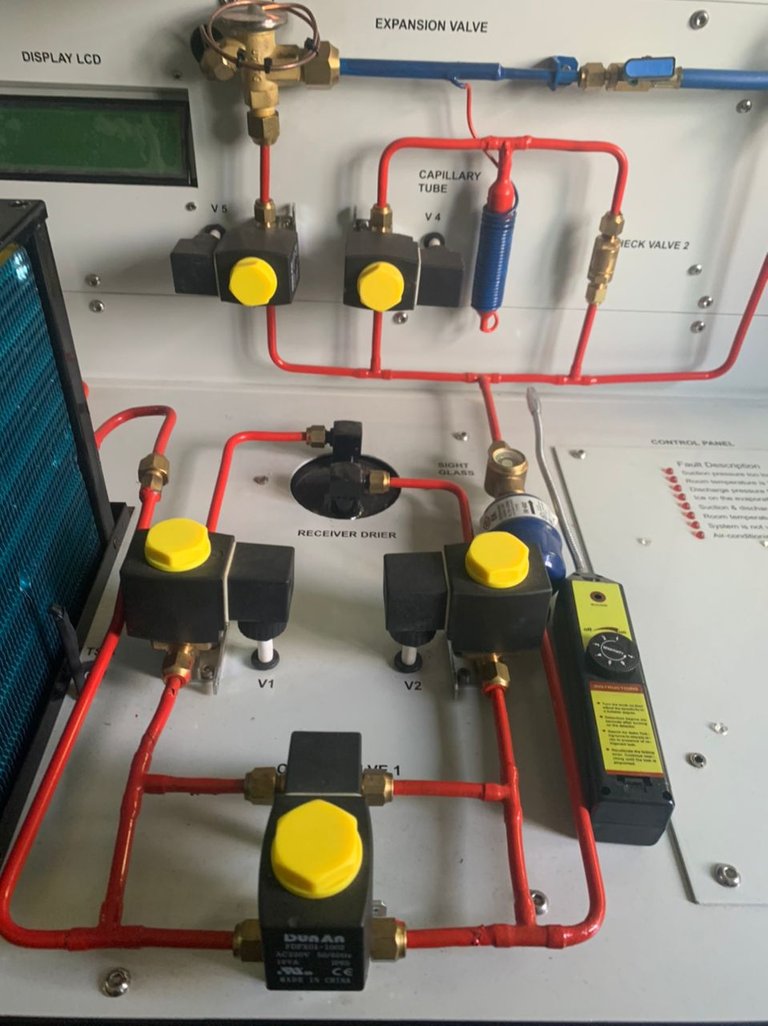
EXPANSION VALVE
It is air-like and very small in diameter. It serves as the passage of fluid to the evaporator and meters the required refrigerant to the evaporator under low pressure. It helps the compressor to dispense the refrigerant appropriately.
It was mentioned that we have two main types of condenser, Capillary expansion valve (used in the domestic cooling system and thermal expansion valve (industrial use)

THE EVAPORATOR
This is the part of the refrigeration system where the refrigerant absorbs heat from the compartment and vaporizes it to produce the desired cooling effect. It exchanges heat within. This is where we place our goods, food, or drinks to change their state from normal temperature to icy state below 0°C.
- The sight glass is where we were able to determine if the refrigerant is enough for cooling, and there are certain signs it shows to know this. If there are bubbles in the refrigerant then it is not enough but if there are no bubbles then it is enough for cooling.
We were taught that the refrigerant is odorless, non-toxic, and non-explosive, despite the fact that it can burn. It condenses vapor and has a low boiling point.
We talked about a sensing bulb, also known as a motor control thermostat, which is used in air-conditioning and refrigeration systems. It is filled with a gas that changes volume when the temperature changes. When the temperature exceeded a certain threshold, the expanded gas activated a valve.
Thanks for checking up on my blog, don't forget to please reblog, upvote and comment.
https://twitter.com/FrancisHephzib/status/1466907450699825158
The rewards earned on this comment will go directly to the person sharing the post on Twitter as long as they are registered with @poshtoken. Sign up at https://hiveposh.com.